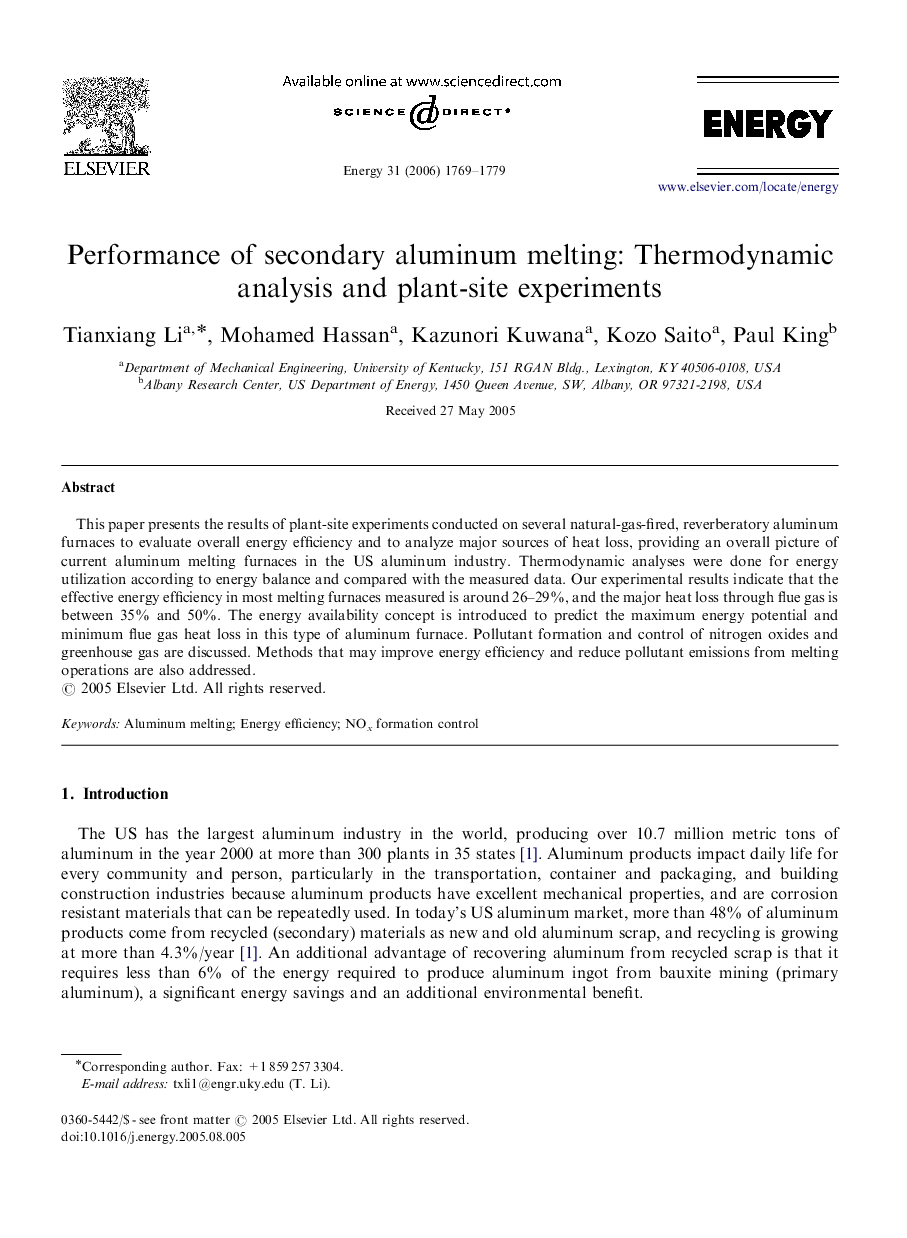| Article ID | Journal | Published Year | Pages | File Type |
|---|---|---|---|---|
| 1736154 | Energy | 2006 | 11 Pages |
This paper presents the results of plant-site experiments conducted on several natural-gas-fired, reverberatory aluminum furnaces to evaluate overall energy efficiency and to analyze major sources of heat loss, providing an overall picture of current aluminum melting furnaces in the US aluminum industry. Thermodynamic analyses were done for energy utilization according to energy balance and compared with the measured data. Our experimental results indicate that the effective energy efficiency in most melting furnaces measured is around 26–29%, and the major heat loss through flue gas is between 35% and 50%. The energy availability concept is introduced to predict the maximum energy potential and minimum flue gas heat loss in this type of aluminum furnace. Pollutant formation and control of nitrogen oxides and greenhouse gas are discussed. Methods that may improve energy efficiency and reduce pollutant emissions from melting operations are also addressed.
